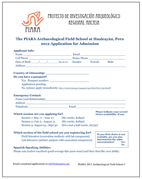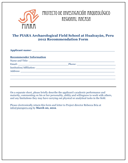Welcome
to the PIARA Archaeological Field School
Join PIARA in the spectacular Andean highlands of Peru! We offer an exciting field school course where participants gain experience in a variety of fundamental field and laboratory skills. In this field experience, participants will excavate, map, and analyze artifacts from prehistoric architecture dating between 2500 BC and AD 1500 and gain experience with a range of specialized methods. During the field school, participants will live and work with the rural, bilingual Quechua/Spanish-speaking community of Hualcayán (highland Ancash, Peru), which facilitates an important component of the field school: learning to ethically and respectfully conduct research on the remains of other people’s heritage through community collaboration. Finally, participants will travel to important archaeological sites and museums in three cities and visit stunning natural features like high altitude lagoons. The field school is open to both students and non-students, but all participants will receive six credit hours from the Universidad Nacional Santiago Antúnez de Mayolo (UNASAM).
Session Dates: May 20 - June 9, 2024
Since 2011, approximately 200 participants have completed the PIARA archaeological field school at Hualcayán in Ancash, Peru. These students came from all over the world including the United States, Canada, England, Scotland, Venezuela, Australia, and China. This work has resulted in several undergraduate and masters theses and professional conference posters. In addition, approximately 40 Peruvian undergraduate students from UNASAM university in Huaraz and San Marcos University in Lima have completed practicum training at Hualcayán, culminating in eight final year thesis projects.
Hualcayán is located in the stunning Cordillera Blanca mountain range of the Peruvian Andes, situated below the Santa Cruz and Alpamayo glaciers in the Huascarán National Park: a UNESCO World Heritage Site protected for its rare beauty and unique ecosystem. We invite you to come experience this amazing landscape, its people, and its ancient past.
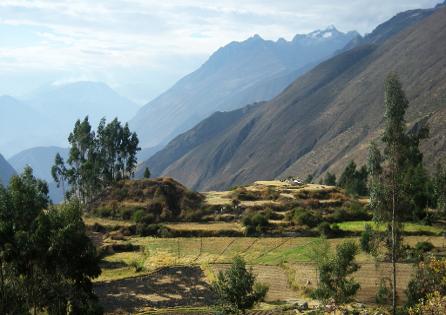
What You Will Learn
Archaeological Research Practices. The field course is an intensive learning experience that provides detailed training in a variety of important methods used in archaeological investigation.
Through both targeted training and daily practice, participants will learn how to properly lay out excavation units, draw plan maps and profiles of stratigraphic and architectural features, and digitally record and visualize data using iPads in the field. Students will also attend workshops or perform labwork in GIS and 3D Photogrammetry, artifact processing, analysis, and illustration, total station mapping, and human skeletal analysis.
Participants will also attend weekly lectures and discuss readings about Andean prehistory. Hualcayán is an exceptional archaeology site for learning archaeology and the Andean past because it was occupied for nearly 4000 years in prehistory. This means that students will encounter the buildings, stratigraphic layers, and artifacts for seven cultural periods and their sequential civilizations or traditions, namely Kotosh (3000–900 BC), Chavín (900–500 BC), Huarás (300 BC–AD 100), Recuay (AD 100–700), Wari (AD 700–1000), and Akillpo (AD 1000–1500, spanning both before and after being integrated into the Inka empire.
Community Collaborations. Working with the local and descendant community of Hualcayán and incorporating their needs and interests is a priority of the PIARA research project, which also makes it an important part of the student experience. Participants will live in this rural Andean community and not be isolated from local people in their daily endeavors: young adults and adults from Hualcayán as well as Peruvian students from the Universidad Nacional de Ancash - Santiago Antúnez de Mayolo (Huaraz, Ancash, Peru) will work alongside us, which provides a robust intercultural learning experience. In this pursuit, students learn how to ethically and respectfully conduct research on the remains of other people’s heritage by collaborating with them as well as through targeted discussions with project and community members alike.
Beyond daily tasks, participants will also contribute to heritage, education, or wellness-focused projects in the Hualcayán community. At minimum, all participants will spend the equivalent of one full day (six to eight hours) working on these projects. The details of this work will depend on the community's expressed needs and may include doing educational activities in the school, implementing projects in the community museum, cleaning up trash, painting buildings, assisting in a harvest, cataloging donated library books, or working with PIARA to prepare or host heritage-focused events.
All participants will receive six credit hours from the hours from the Universidad Nacional Santiago Antúnez de Mayolo for successfully completing the course.
We invite you to explore the exciting Andean past, learn advanced archaeological methods, and experience traditional Andean culture at Hualcayán with us this summer!


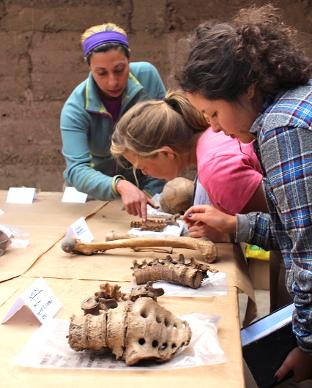




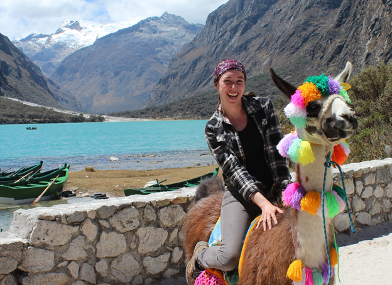

Schedule of Activities
You will fly into Lima the day your session begins. Depending on what time you fly in (many flights into Lima arrive late), this day can be spent relaxing in the hotel, acclimating to your new environment, or exploring the Miraflores neighborhood on your own. The second day we will spend in Lima visiting the Museo Nacional de Antropología, Arqueología e Historia del Perú and the archaeological site and museum of Huaca Pucllana. Students will also have time to shop for any last minute necessities. To kick off the field season we will also treat you to a banquet-style lunch where students can try many world-renowned Peruvian dishes.
We will spend the third day busing to Caraz (~10 hours, located at 2285 m/7497 ft) and students will have time to explore the local market and begin acclimating to the altitude before heading up to Hualcayán early on day four (1.5 hours from Caraz, located at 3150 m /10,335 ft). Caraz is a beautifully preserved colonial town with a pleasant atmosphere and warm climate. Caraz is known for its bakeries, sweets, and ice cream, and there are pharmacies and internet cafes to do last minute shopping and emailing before heading to Hualcayán. In Caraz you will experience the coming together of rural and city life.
All field and laboratory activities will take place within the modern village and community of Hualcayán. We will work Monday through Friday each week between 8 am and 5:00 pm with an hour break for lunch, and Saturdays will be half days from 9 am to 1 pm and often dedicated to workshops. We will have a cook who serves breakfast at 7 am and dinner at 7 pm each day. Sundays will be a day of rest to do as you please, such as hike to nearby natural or archaeological features, wash clothes, watch or play soccer games in the plaza, watch movies, or just read and relax.
At the end of the project we will have a feast featuring a pachamanca, a traditional Andean-style barbecue cooked in the earth with hot stones. This will give you an opportunity to thank community members for their hospitality and celebrate all the hard work accomplished!
Room and Board Arrangements
You will live in the heart of Hualcayán, a traditional Andean bilingual Quechua/Spanish-speaking farming community, providing an immersed cultural experience. Hualcayan has around 400-500 people. Local people grow quinoa, potatoes, snow peas, beans, and wheat, and raise animals such as pigs, cows, chickens, and guinea pigs (called cuy). In 2012, PIARA constructed a project house with a large lab space, kitchen, bathrooms, basic showers, and several spacious sleeping quarters. This adobe and concrete building is a ten-minute walk from the archaeological site and will serve as our home, kitchen, classroom (with projector) and laboratory.
All participants are required to bring their own sleeping bag and sleeping mat for the floor (accepted applicants will receive a detailed supply list). Hualcayán has a beautiful view of the Callejón de Huaylas valley, and has several other archaeological and natural features within a short walking distance from the village including a waterfall, and students are encouraged to explore the area during free time. We also have a library of archaeology books to read and reference.
In the evenings at Hualcayán we will have a movie projector and movies to choose from. We also have a courtyard where you can socialize. Students are encouraged to arrive with international plans on their personal phones. Chores will rotate and include helping our cook prepare dinner, dishwashing, boiling water, getting lunch ready for the field, bathroom duty, and sweeping. Participants must be willing to live in close quarters with others (including Peruvian participants who may not speak English), have a general attitude of cooperation, and have fun while working hard!
Prior Spanish or Quechua language training will enrich this experience, but this is not a requirement as the course is instructed in English and Spanish.
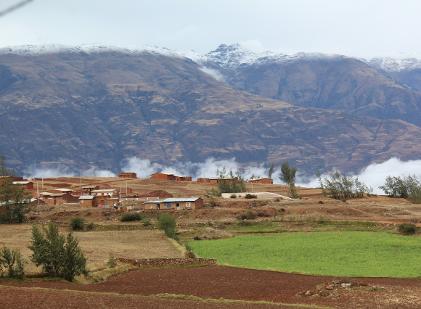
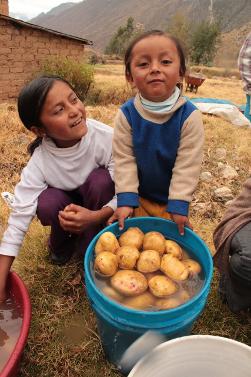
Cost
The PIARA program fee includes archaeological training, 6 course credits from UNASAM, food and lodging in Hualcayán, and travel within Peru to important archaeological landmarks and museums in Lima and Caraz with food and hotel stays in these destinations (except for ~two meals). The total cost is $3150.
Fees include:
* Six credit hours from the Universidad Nacional Santiago Antúnez de Mayolo.
* All instruction and supplies
* All bus transportation within Peru between Lima, Caraz, and Hualcayán
* All meals and housing during the field school at Hualcayán
* Hotel accommodation in Lima (2 nights) and Caraz (1 night) at the beginning and end of the field school
* Entrance fees and transportation to museum and archaeological site visits
* Two special restaurant meals in Lima and Caraz
* Hardcover notebook and assigned readings
Fees do not include:
* Roundtrip airfare to Lima, Peru, health/travel insurance, vaccinations, passport/visa fees, airport taxes, taxi to/from Lima hotel (although we will arrange this for you), personal spending money for snacks, phone cards
* Sleeping bag, sleeping mat, and clothing for warm days and chilly nights
* Personal medicines, vitamins, sunscreen or other necessities (we will have first aid supplies)
* Gardening or work gloves that fit your hands well (i.e. not too much extra fabric at the tips) for outdoor excursions in areas with thorny brush.
* Small solar charger for daily charging of personal items like cameras and iPods (optional; we will have electricity but we like to reserve current for necessary field equipment, computers, water boilers, etc.)
* Food during free time in Lima and Caraz
* Any additional snacks or drinks
* Any individual travel throughout Peru before or after the field school

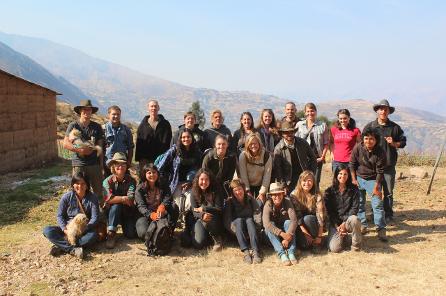
Fostering a Safe Work Environment
PIARA is committed to maintaining a safe and inclusive working environment for all participants. Please review our policies and expectations for acceptable behavior. We have a zero-tolerance policy for sexual or gender-based discrimination or harassment. Please download and read our policy.
Field School Scholarships
The Archaeological Institute of America offers a few competitive scholarships for field school participants: http://www.archaeological.org/grants/708 and PIARA applicants are encouraged to apply as we have had successful recipients in the past. Also, please inquire immediately within your own university about summer research travel funding; deadlines for competitions often occur in early Spring.
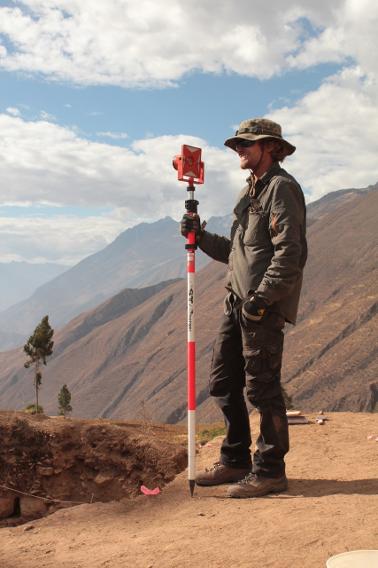
Testimonials
"The PIARA field school was the perfect place to combine my love of the outdoors with hands-on archaeological experience. I gained practical skills in excavation, mapping, and laboratory analysis that leave me feeling prepared for the job market or graduate studies. I was also able to test out my Spanish skills with the local community and loved exploring the surrounding Andes. I highly recommend this field school!" -Jillian Richie
"As an aspiring biological anthropologist, I was looking for a field school that would give me hands-on experience with skeletal analysis. The PIARA field school provided an amazing opportunity to take my knowledge far beyond what I had learned in textbooks. I strengthened my analysis skills and also learned the field methods necessary to conduct bioarchaeological excavations. Hualcayán is the perfect location to explore the outdoors, engage in Peruvian culture, and experience what archaeology is really like!" -Shaina Molano
"This experience has not only given me the technical skills necessary for future employment, but also an understanding of how to conduct research in the field. Hualcayán is a stunning location to work in and explore, and the field school was affordable. You won't find a more authentic and informative experience than this!" -Sam Hutchins
How to Apply
Applicants must be at least 18 years or older and have successfully completed one year of full-time college.
1. Download, fill out, and email the application form.
2. Have a professor/supervisor email a brief letter of recommendation with the recommendation form attached to the email.
3. Email an unofficial (digital/scanned) copy of your latest or final university transcript (if you are a current or recent student).
4. Send in a $500 deposit within 7 days after you are notified of your acceptance (you will be sent a payment link upon acceptance).
All applications, recommendations, and unofficial transcripts must be sent electronically to PIARA director Dr. Rebecca Bria at piaraperu@gmail.com.
Note: Be sure to download each form before filling it out as changes made to these forms in the browser will not be saved upon download.
The application deadline is rolling, so interested students should submit their application as soon as possible, as space is limited. Applications will be reviewed for acceptance as they are received until the sessions are full. Qualified applicants who have completed steps 1-3 above will be notified of their acceptance within one week of sending in all application materials. The PIARA director may request a phone interview with applicants before acceptance. If you are accepted, completing Step 4 will secure your place in the field school. You may send in your application before your recommendation has been sent in by your professor, but please contact them as soon as possible so that your application can be processed without delay.
All participants must send in their final payment within four weeks of the date of their acceptance. Extensions to this deadline will be made in special cases if financial aid arrangements delay funds or for other extenuating circumstances. Such a case must be discussed with PIARA director Rebecca Bria in advance of the deadline.
All application materials should be submitted electronically to piaraperu@gmail.com.
Translate This Page
All PIARA artwork, photos, and web and flyer designs are copyright © Rebecca E. Bria and PIARA
